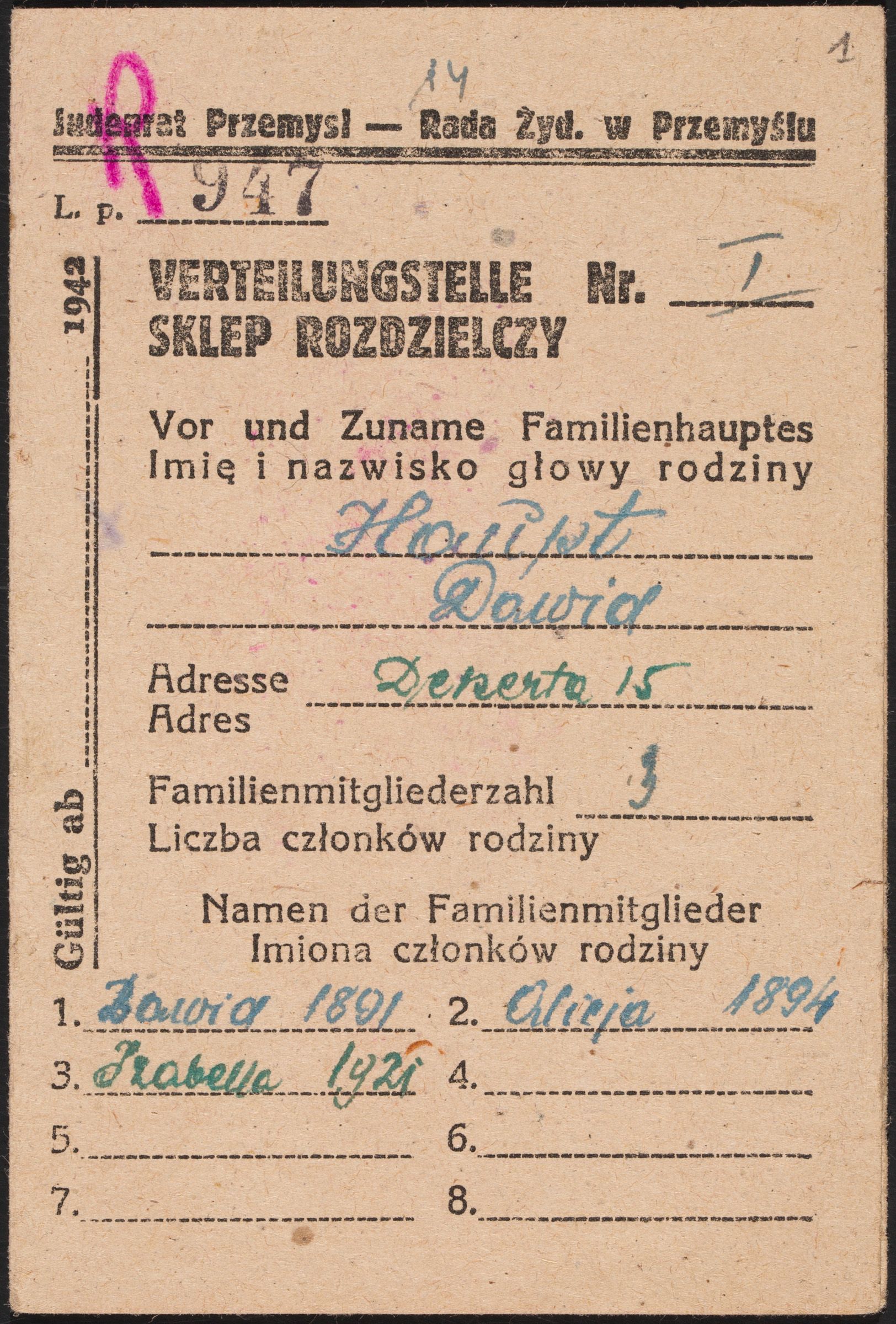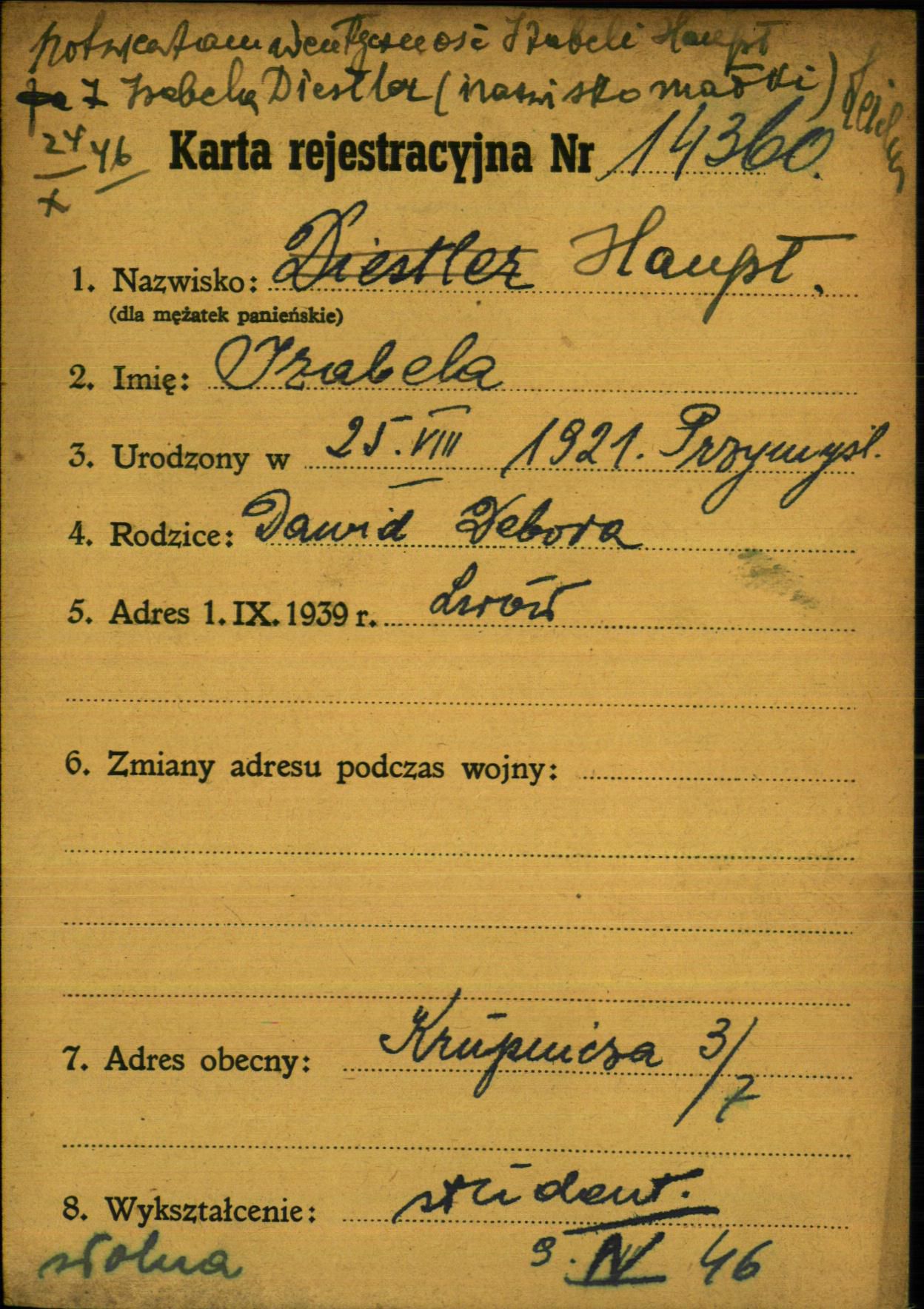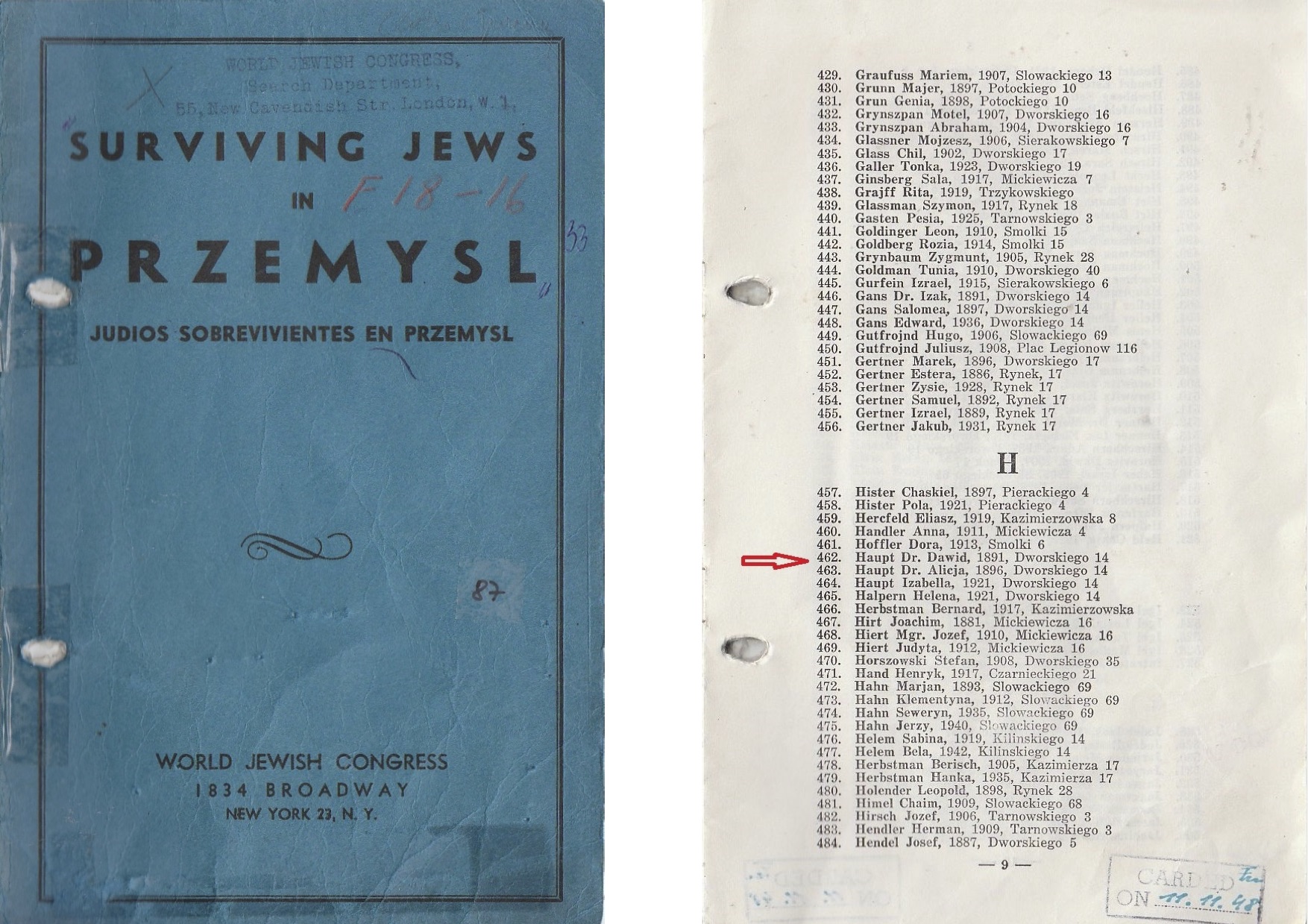As an archival researcher at Yad Vashem, I often try to fill in the missing information from various sources. In the framework of the EHRI fellowship, I spent two weeks in the Jewish Historical Institute (Żydowski Instytut Historyczny, ŻIH) in Warsaw, researching Holocaust-related materials. I wanted to find out what documents from the ŻIH archives could be used in combination with Yad Vashem’s documents in order to reconstruct live stories of specific people.

As an example of survivor stories, I researched the case of Dr. Dawid Mieczysław Haupt, a lawyer from Przemyśl. In 1942, Dawid Mieczysław together with his relatives Alicja Haupt, who was a physician, and Izabella Haupt were recorded by the Judenrat (Jewish council).
Przemyśl was captured by the Germans on 14 September 1939. Within a few days 600 Jews were executed. The Red Army arrived on 28 September. The number of Jewish community leaders were exiled to the Soviet Union as were about 7000 in April-June 1940. The Germans retook the city on 28 June 1941. In July a Judenrat (Jewish Council) was set up and made responsible for supplying forced labors.
From the Jewish Council card, we know the address of the Haupt family, and the fact that the family members were together (rather than separated) in 1942. The family lived in Dekerta str. 3. (Archival signature in ŻIH: 264/1)
Dr. Dawid Haupt gave a testimony to the Central Committee of Polish Jews just after the war. The testimony is kept in the ŻIH, in the collection Zbiór relacji Żydów ocalałych z Zagłady (Archival signature 301/677). In his testimony, Haupt described what happened at that time in Przemyśl, what his family did, and where they worked.

In the course of researching their family story, it turned out that the Polish family Sochacki rescued the Haupt family. On May 16, 1993 Yad Vashem recognized Janina and Eugeniusz Sochacki, their daughter, Romualda, and son, Józef, as Righteous Among the Nations. In Yad Vashem database of the Righteous Among the Nations, we can find the story of the rescue:
During the occupation, Romualda Sochacka was a permanent employee at the local military canteen where Jadwiga Haupt who lived in the Przemysł ghetto, also worked. As a Jewish forced laborer, Haupt was escorted between the ghetto and her workplace and back each morning and evening. In due course, Sochacka and Haupt became friends, and in the summer of 1942, when the Germans began sending the ghetto inhabitants to the Bełżec death camp, Haupt turned to Sochacka for help. Sochacka’s parents agreed to take in not only Haupt but also her father, Dawid Mieczysław, and a relative of hers, Alicija Halpern, and her daughter, Halina. Eugeniusz Sochacki and his son, Józef, planned the escape from the ghetto down to the last detail. In the middle of a cold, rainy night, at enormous personal risk, they helped the four Jews escape to the Aryan side of the city. The Sochackis hid them in their apartment in a hiding place they had prepared in advance, where they looked after them devotedly and saw to all their needs until July 1944, when the area was liberated. Eugeniusz Sochacki and his family saw saving the Jews, who were being persecuted by a common enemy, as a patriotic duty that could not be shirked, whatever the cost.
http://db.yadvashem.org/righteous/family.html?language=en&itemId=4044991
In the Yad Vashem archives, I found the “Card catalog of the Jewish Committee of Krakow with the names of survivors, 1945-1947“ (Archival signature O.37/89); the card of Izabella Haupt was there. It shows that in 1946 Izabella was in Krakow; we also learn her address: Krupnicza str. 3.

In the Database of the International Tracing Services, I also found the list of survivors from Przemyśl that gives the information from 1948. The Haupt family members were recorded as survivors by World Jewish Congress. All these documents together recover the family story during and after the WWII.
Modern technologies and new avenues of research such as those offered by the EHRI portal allow searching for information in multiple places and in a much wider variety of sources than it used to be possible. It creates new opportunities for research and allows us to uncover additional details in order to reconstruct the stories of the victims and survivors of the Holocaust. This case illustrates the significance of connecting sources that allow us to search in multiple archives.

Ryan
Hello – I’m an American who is trying to find some information about my mother’s side of the family. Her maiden name is Haupt, her father Paul was born in around 1906 I believe. Her was orphaned upon arriving in New York and unfortunately we know little of his family other than his siblings. His father we think was named Samuel and his siblings were Ben, Fran, and Byrdie, but that was a nickname for sure. Not much to go on of course. Any direction you can point me would be appreciated.
Take care,
Ryan
Theresa
I recommend joining Ancestry.com. They have a significant amount of records that I have been using for years to research my family’s ancestry.
I also have Haupt lineage but my Haupt ancestors came to America in early 1700’s via Switzerland.
James Haupt
I have done a lot of research in regard to the Haupt family. In fact, I have been able to trace the Haupt family back to the 1100’s and sood will complete a DNA analysis for additional information. I would be happy to share.